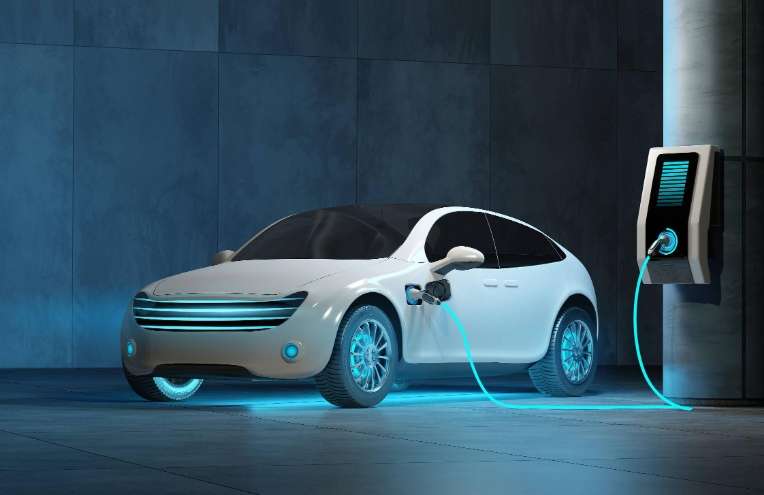
As the 800-volt high-voltage platform becomes a standard configuration for new energy vehicles,the power density of drive motors is increasing at a rate of 12%per year.Traditional welded cooling water pipes face physical limitations—during peak power operation,the temperature at the welds can surge by 80°C,causing localized deformation of the housing,which ultimately leads to uneven magnetic gaps and electromagnetic whistling.The core battlefield of this cooling revolution focuses on the geometric precision and thermal conductivity efficiency of the winding water channels inside the motor housing.
Thermal Deformation Dilemma of Welding Processes
A failure analysis of a 400kW drive motor reveals typical pain points:The high temperature of 1350°C during welding causes local grain coarsening of the housing,resulting in wavy deformation with a deviation of 0.2mm per 100mm length;the weld layer forms a thermal resistance layer between the coolant and the metal,reducing thermal conductivity by 40%;under thermal cycling,the difference in thermal deformation coefficients of the welds leads to micro-cracks,with leakage rates climbing to 15%after 30,000 cycles.This is particularly pronounced in the machining of large metal parts—truck motor housings over one meter long see exponentially increasing difficulty in controlling welding deformation.
Breakthrough with CNC Integrated Forming
Topology Optimization Revolution of Water Channels
Generative design breaks through traditional limitations by sculpting a biomimetic vascular network inside the housing:flow resistance is reduced by 35%;the thickness of thin-walled areas is precisely controlled at 1.2±0.05mm(traditional casting requires over 3mm);conformal cooling channels that follow the stator contour directly reduce hot spot temperatures by 48°C.This design freedom paves a new path for the cooling of new energy motors.
Five-Axis Simultaneous Precision Machining
The technological leap in machining precision metal parts is evident here:a 3mm diameter extended milling cutter penetrates deep into the housing to complete complex channel machining with a depth-to-diameter ratio of 18:1;a variable stiffness clamping system releases stress during rough machining and rigidly locks during finish machining;a laser probe automatically scans deformation after every five water channels are completed,compensating for tool path trajectories in real time.Compared to the±0.8mm water channel position error of welding processes,integrated forming improves accuracy to±0.05mm.
Triple Control Advantages of Thermal Deformation
In terms of thermal conductivity efficiency,the welding interface has a thermal resistance of 0.002m²K/W,while CNC integrated forming achieves direct metal heat transfer;in residual stress distribution,the welding area generates 300MPa tensile stress,while integrated forming forms an overall compressive stress of 80MPa;in terms of geometric stability,the deformation of the welding heat-affected zone is more than four times that of integrated forming.These differences directly determine the reliability of the motor under extreme operating conditions.
Empirical Value Leap
After adopting an integrated housing on an 800V electric drive platform,the continuous power density increased to 5.8kW/kg,electromagnetic noise dropped from 78 decibels to 71 decibels,and the unevenness of magnetic gaps caused by thermal deformation improved fourfold.The deeper value is reflected in the reconstruction of the manufacturing paradigm:photovoltaic inverters using the same process reduced the temperature difference of power modules to 8°C;the pass rate of hydrogen fuel air compressor housings jumped from 76%to 98%;and the development cycle of mining electric wheel hub motors was shortened by 40%.
Process Adaptation and Scene Wisdom
Different application scenarios require rational choices:welding processes are still suitable for logistics vehicle motors below 200kW,balancing cost and efficiency;the 800V ultra-fast charging platform prioritizes CNC integrated forming to cope with extreme thermal loads;for ultra-large components like ship propulsion motors,segmented machining followed by vacuum diffusion welding can be used.The key lies in understanding the matching logic between thermal management needs and manufacturing capabilities.
The Dance of Thermodynamics and Precision Manufacturing
In the field of large metal part machining,wind power gearboxes extend life through residual stress control,while motor housing cooling needs to tame thermal deformation to maintain precision.When a five-axis CNC machine carves a three-dimensional cooling labyrinth from a solid block of aluminum,the heat that once trapped energy conversion will be efficiently dissipated through precision metal channels.This is not only a process evolution but also the ultimate interpretation of the"manufacturing as design"philosophy in the new energy era—when cooling channels and structural bodies are integrated,thermal deformation is transformed from a defect into a controllable art.